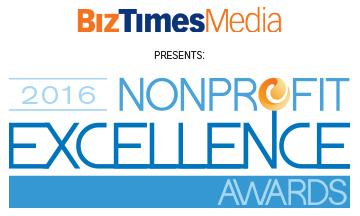Camilla Matthews, MD presented on Sleep Apnea and Down syndrome on January 18th during a webinar hosted by the Madison Area Down Syndrome Society. We are summarizing her presentation here. Please access the recording of her webinar for further information.
What affects optimal sleep?
Macro sleep environment: temperature in the bedroom, the noise and light level, and the level of safety
Micro sleep environment: the texture of bedsheets and the position the child sleeps in
Sleep practices: schedules around feeding time and napping
Socio-cultural context: parenting practices and values
Socio-emotional context: attachment factors in the family and child's temperament, maternal mental health/stress
Developmental context: what stage of development the child is in and the child's age
Health issues: medication and nutrition
Why might my child experience daytime sleepiness?
Low sleep quantity
Fragmented sleep quality
Covers conditions like sleep apnea and restless legs
Primary Sleep Disorders of Excessive Sleepiness
Narcolepsy
These conditions can co-occur with sleep apnea
Circadian Rhythm Disorders
We all have a preference for getting up earlier or going to bed later
What is sleep apnea?
Sleep apnea is defined as "stopping breathing when sleeping." For adults with sleep apnea, the stopped breathing lasts for more than 10 seconds. For children, the disruption lasts for more than two respiratory cycles. Both adults and children will stop and resume breathing throughout the night.
Are there different kinds of sleep apnea?
Yes. Obstructive Sleep Apnea, "Central" Sleep Apnea, and Hypopnea.
Obstructive Sleep Apnea is breathing blocked by an "obstruction" of the upper airway while chest and abdominal muscles keep attempting to breathe.
shallow breathing, snoring with big gasps
"Central" Sleep Apnea
breathing takes a pause, the brain "skips a beat"
Hypopnea
reduction in breathing of about 50%, shallow breath, due to a partially obstructed airway
small change in oxygen level
shallow breath
Why are children with DS at higher risk for Obstructive Sleep Apnea?
Smaller mid-face: typically people with Down syndrome have a smaller upper jaw, and/or nose. A smaller jaw makes the tongue seem larger and this can cause an obstruction.
Decreased pharyngeal muscle tone: pharyngeal muscles are the muscles that support breathing and those muscles can be weaker in people with DS.
Why is sleep apnea a concern?
Children with sleep apnea have been known to have decreased IQ scores and school performance, hyperactivity, and cognitive defects. Sleep apnea can lead to hypertension although it is not common in children.
Specific effects of sleep apnea in children with DS:
verbal IQ scores
impaired executive function
cognitive flexibility
depression
in adolescents
could be associated with other behavioral issues
How common is sleep apnea in children with Down syndrome?
Very common. 60-100% of children with DS have sleep apnea.
Symptoms of sleep apnea:
Snoring/heavy breathing
54% of children with DS with no reported symptoms demonstrated sleep apnea on a sleep study (Schott, 2006)
Sleep disruption
restless sleep
daytime sleepiness
lots of napping during the day
Irritability
Poor attention
Poor concentration
Sleep positions
Sleeping sitting up and folded forward
Sleeping with the neck hyperextended/ off the bed
How do you evaluate for sleep apnea?
Evaluations are usually done before the age of 4 but can be done anytime. Meeting with a specialist before testing will help determine if your child can tolerate a sleep study. During a sleep study, you stay overnight at a sleep center. Dr. Matthews recommends looking for one that routinely deals with children. As a parent or caregiver, you will stay overnight as well.
monitor oxygen level, carbon dioxide level
videotaping, EEG (brain waves), position, breathing effort
measure airflow
Potential for "At-Home" testing
Watch Pat
More info available at: www.uwhealth.org/wisconsinsleep
How do you treat sleep apnea?
Surgery
Adenotonsillectomy: removal of tonsils and adenoids
Lingual tonsillectomy: removal of lingual tonsils
Other: evaluation by ENT, craniofacial surgeon, or pulmonologists
Medications
GERD/ Heart Burn/ Trouble Swallowing
Allergic Rhinitis
Asthma
Weight Loss
CPAP: Continuous Positive Airway Pressure
Main Takeaways:
Sleep apnea is very common in infants, children, and teens with Down syndrome.
Sleep apnea affects the heart, lungs, and brain of people which affects IQ, mood, and attention.
Many factors affect sleep apnea so there are many treatment options.
Talk to your child's doctor about your concerns and how to get tested/treated.
Access full webinar recording here.








